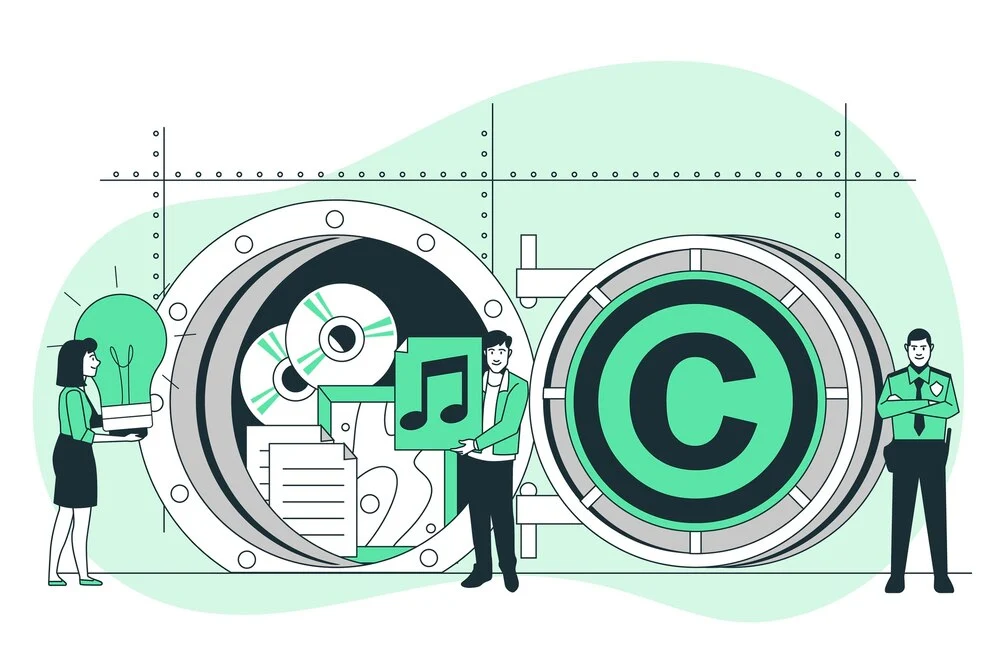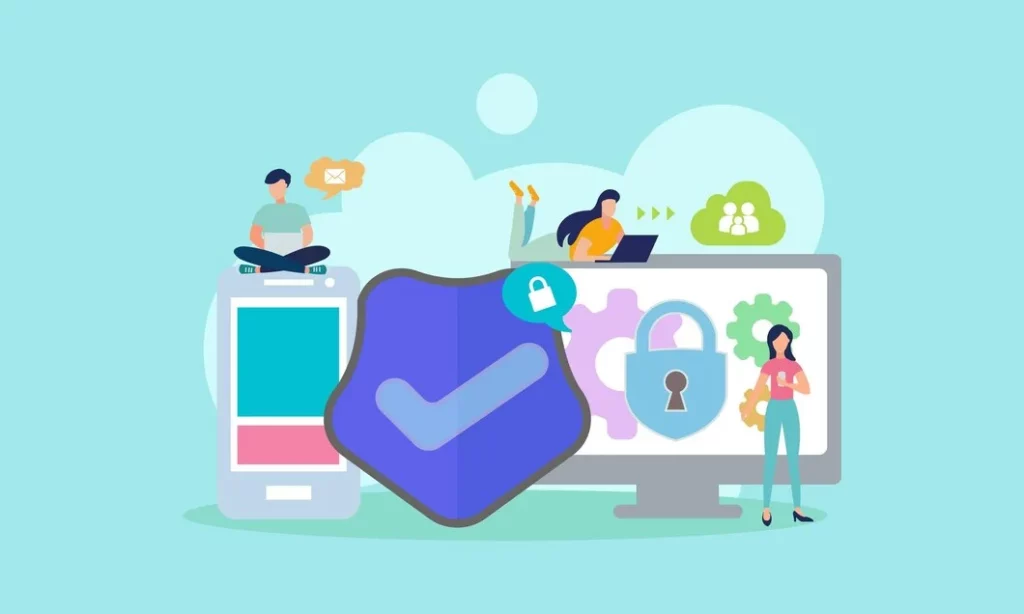Home 
/
Copyright/ No Copyright Infringement Intended – What It Means and Why It’s Not Enough
No Copyright Infringement Intended – What It Means and Why It’s Not Enough
Manish Jindal
March 27, 2024
|
0min read
“No copyright infringement intended” is a phrase often seen in YouTube video descriptions, blog posts, and other online content that uses copyrighted material.
Many creators include this statement with the expectation that it will offer them some legal protection against potential consequences.
But what does the phrase really mean, and is it genuinely effective in shielding individuals from the negative outcomes of copyright infringement?
In this article, you will learn all about the phrase “no copyright infringement intended.” Also, we will look into the effectiveness of this widely used disclaimer.
Copyright is a form of intellectual property law. It protects original works of authorship fixed in a tangible medium, such as music, literature, and artistic creations.
It gives the content creator the sole authority to copy, distribute, perform in public, and produce derivative works.
“No copyright infringement intended” or “I don’t intend to infringe copyright” is a disclaimer people use when they incorporate copyrighted material into their content without permission.
They assume that by declaring their intention not to violate copyright, they can avoid the associated legal repercussions.
When you use the expression “no copyright infringement intended,” you are simply proclaiming to the world that you are conducting willful copyright infringement.
This means that you are employing the exclusive copyright-protected content of another person without their permission while using the phrase.
Here are a few examples where people might use the phrase “no copyright infringement intended”:

We understand the importance of respecting intellectual property rights and the value of original creative work.
We aim to use materials in our that are either in the public domain, licensed under a creative commons attribution, or with permission from the original owner.
However, we recognise that mistakes can happen, and we are committed to addressing any copyright issues that may arise. Please read the following disclaimer carefully.
Disclaimer: The material used in this is purely for [educational/entertainment/informational/etc.] purposes. We do not claim ownership of the [music/images/footage/etc.] used, and no copyright infringement is intended. All rights go to their respective owners. If you are the [artist/creator/rights holder/etc.] and would like us to remove this content, please contact us and we will comply with your request immediately.
The phrase “no infringement of copyright is intended” is often used as a disclaimer to show that the use of copyrighted material in a certain work was not done with the intention of infringing on the original owner’s rights.
It’s commonly used in situations where the use of copyrighted material is considered fair use or where the user has obtained permission from the original copyright owner.
Some common situations where you may want to use such a disclaimer include:
Using a disclaimer alone does not guarantee protection from possible infringement accusations.
It is advisable to obtain permission or seek advice from a legal professional to ensure the lawful use of copyrighted material.
Suggested Reading: No copyright disclaimer
When creating or sharing music that is not intended for copyright infringement, it is essential to be aware of copyright laws and adhere to the following guidelines to ensure legal compliance:
Use Royalty-Free or Public Domain Music: Utilise either royalty-free background music or the music present in the public domain.
Royalty-free music allows you to use a track without paying ongoing royalties, while public-domain music refers to works that are no longer protected lawfully and can be freely used by anyone.
Epidemic Sound and PremiumBeat are some of the websites that have royalty-free music that you can use.
Obtain Proper Licenses: If you wish to use copyrighted music, obtain the necessary licenses from the creator of that music or a licensing agency.
Understand Fair Use: Familiarise yourself with the concept of “fair use,” which permits limited use of copyrighted material without obtaining permission from the copyright holder.
Fair use, a copyright exception, typically applies to activities like criticism, news reporting, teaching, and research.
However, fair use is a complex legal concept, and it’s essential to consult with an attorney or copyright expert to ensure your use of copyrighted music falls within the scope of fair use.
Give Proper Attribution: When using music under a Creative Commons license or another type of permissive license, make sure to provide proper attribution to the copyright holder according to the terms of the license.
Create Original Music: Compose your music for videos and avoid sampling copyrighted material without permission. By creating original music, you can maintain full ownership and control over your work.
By adhering to these guidelines, you can create or share music for users without unintentionally engaging in infringement.
It’s essential to understand and respect copyright policies and laws to protect yourself from potential legal consequences and support the rights of artists and creators.
Suggested Reading: Consequences of copyright infringement
You’re at the right place, contact us to know more.
Ready to Secure Your Online Presence?

A disclaimer stating “no infringement of copyright is intended” is not a sufficient measure to avoid legal issues related to the violation of the exclusive rights of the content creator.
The phrase does not provide any copyright protection or absolve you of responsibility for using copyrighted material without permission.
In reality, by utilising this disclaimer, you are admitting that you have used protected content without the required permission.
The disclaimer “No copyright infringement intended” is commonly used for several reasons:
Lack of understanding: Many people may not fully understand copyright law and the concept of infringement.
They might mistakenly believe that adding this phrase can protect them from legal consequences, even though it does not provide any actual protection.
Good faith: Some content creators use this disclaimer in good faith, believing that acknowledging the original creator and expressing their intent not to infringe will be sufficient to avoid legal issues.
They might see the phrase as a sign of respect and a way to give the copyright owner credit.
Imitation: The widespread use of the disclaimer might lead others to believe it is a standard practice that provides some form of legal protection. People might follow the example of others without fully understanding its implications or ineffectiveness.
Attempt to mitigate consequences: Some users might be aware that the phrase does not provide complete protection but still use it in the hope that it might help reduce the severity of the consequences if they face legal action.
Misconception about fair use: Some people might incorrectly assume that their use of copyrighted material constitutes fair use and that the disclaimer adds an additional layer of protection.
The disclaimer stated above has no influence on the legal evaluation of fair use, which is established by a number of factors.
Suggested Reading: Fair use copyright disclaimer
Instead of using “no copyright infringement intended,” you can consider using phrases such as:
These alternatives convey your acknowledgment of copyright ownership and your intention to comply with copyright laws while sharing the content.
The processes for obtaining permission to utilise the protected content are as follows:

The phrase “No copyright infringement intended” is often misused as a disclaimer by content creators who mistakenly believe it offers protection from legal consequences related to infringement.
However, it is vital to note that this remark bears no legal weight and does not exempt producers from the repercussions of using copyrighted content without permission.
To avoid infringing on copyrights, it is essential to understand copyright law, create original material, obtain necessary permissions, and utilise royalty-free or public domain materials when appropriate.
Additionally, you can explore further protection measures for your original work, such as TextMarker, to protect it from unauthorised use.
By respecting the exclusive rights of copyright owners and following copyright guidelines, all content producers can contribute to a healthier and more sustainable creative environment.
Content creators often use the phrase: “No copyright infringement intended” as a disclaimer when they include copyrighted material in their work without obtaining proper permission.
A disclaimer statement informs visitors to your website or mobile application that there are some circumstances for which you cannot be held liable.
A disclaimer can help you reduce the number of legal obligations your company may face as well as help you protect your intellectual property.
Many people assume that simply adding a disclaimer such as “No copyright infringement intended” is enough to avoid legal repercussions. However, this is a dangerous misconception.
Disclaimers hold little weight in court and do not absolve users from potential legal consequences for the copyright infringement action.
No, adding “no copyright infringement intended” to your post or online video does not automatically protect you from copyright infringement claims.
Intentional copyright infringement is a serious offense, and if you knowingly use copyrighted material without permission, you could be subject to legal action.
It’s essential to always obtain permission or use material within the scope of fair use to avoid any legal issues.
Fair use is one of the exceptions to copyright laid out in the law that allows the use of copyrighted material without the need for permission from the actual owner.
The use of copyrighted material for purposes such as criticism, comment, news reporting, teaching, scholarship, or research can be considered fair use.
It is important to understand that fair use is evaluated individually for each case, and this disclaimer stated before does not guarantee that your use will be considered fair use.
It is crucial to evaluate whether your use falls within the scope of fair use and serves informational purposes.
No, simply stating “no copyright infringement intended” is not a legal defense to a copyright infringement claim.
If you are accused of a violation of copyright ownership rights, you will need to show that your use of the copyrighted material falls within the scope of fair use or that you have obtained permission from the content owner.
When sharing copyrighted material without permission, some individuals use the phrase ‘No copyright infringement intended, for entertainment purposes only.’
They often include this statement with the hope of avoiding legal consequences or to emphasise that they are not attempting to profit from copyrighted material.
Safeguard Your Digital Assets with our Cutting-Edge Security Solutions
Elevate your digital stature and shield your priceless reputation from harm. Select Bytescare for ultimate protection against piracy, defamation, and impersonation.